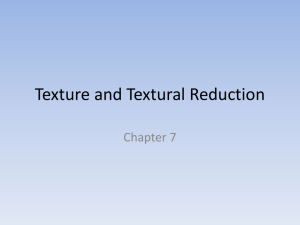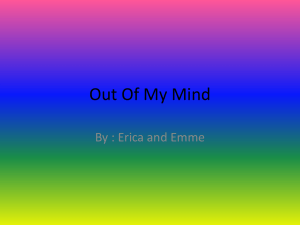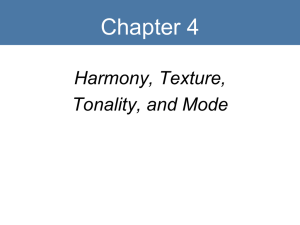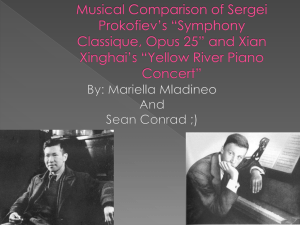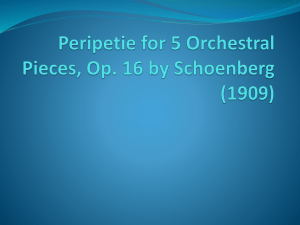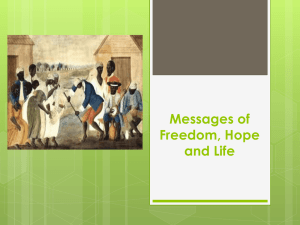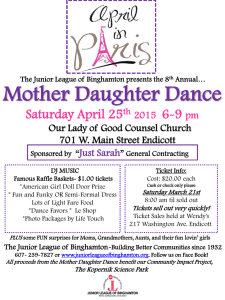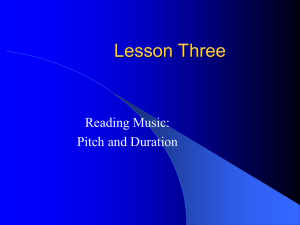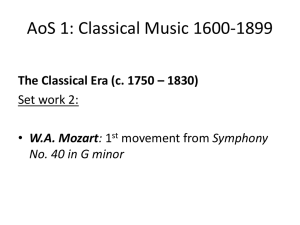GCSE Music Listening Revision
advertisement
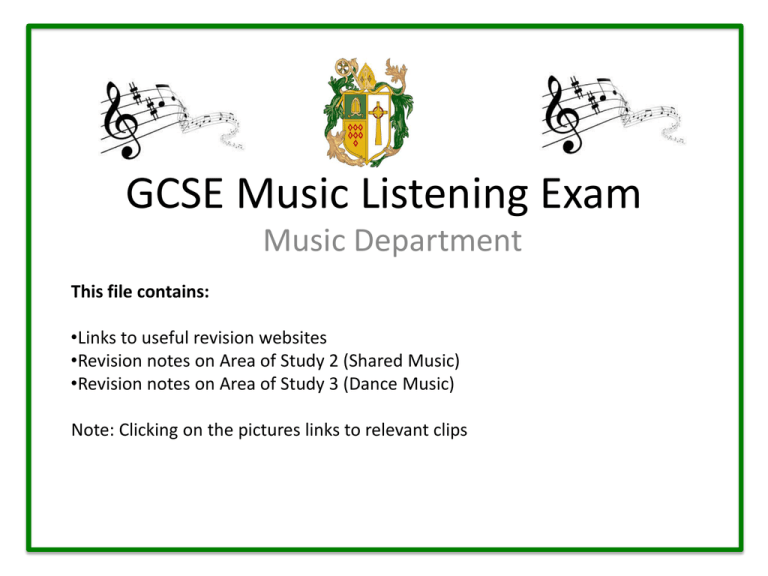
GCSE Music Listening Exam Music Department This file contains: •Links to useful revision websites •Revision notes on Area of Study 2 (Shared Music) •Revision notes on Area of Study 3 (Dance Music) Note: Clicking on the pictures links to relevant clips Useful Websites BBC Bitesize: http://www.bbc.co.uk/schools/gcsebitesize/m usic/ Exam board website: http://www.ocr.org.uk/qualifications/gcsemusic-j535-from-2012/ Ensembles Indian Classical Music Venue / occasion Religious ceremonies Date & Place of Origin 3000 years Metre, rhythm & tempo •Based on cycle of beats called the tala •The table player improvises around the tala Ravi Shankar (R.I.P) Indian Classical Music Melody •Based on the set of notes called a raga •Ragas are associated with seasons, moods etc... •Everyone agrees on the raga at the start – players improvise using the notes •Dialogue / pitch bends / glassandos / scales / ornamentation How do the players know what to play? •Master-student tradition (no notation) •The players agree on the tala and raga to use at the start and then improvise around it Structure •3 main sections (Alap – no tabla / Gat - tabla enters/ Jhalla – gets faster) Instrumentation •Sitar (melody - raga) •Tabla (rhythm – tala) •Tanpura (drone) •Sarod (glissandos) •Bansuri (flute) Indian Instruments The Tambura This is a 4 stringed instrument. It is a backing instrument The Sitar This is a 7 stringed instrument. One string plays the main melody and the others drone. It improvises. The Tabla This is a pair of drums. Musician: Ravi Shankar Gamelan Music Date & Place of Origin Indonesia Hundreds of years Metre, rhythm & tempo •Based on cycle of beats called the tala •The table player improvises around the tala Venue / occasion Courts, temples. Village squares for puppet shows, dances or religious ceremonies Gamelan Music Melody & Texture •Scales – slendro / pelog •All instruments play the same melody which repeats but they play at different speeds = heterophonic texture How do the players know what to play? •Learned by ear •Listen carefully to each other •Drummer leads the groups indicating tempo changes etc... Structure •Cyclic •Gongan is the name for a cycle – marked by the gong Instrumentation •Gongs •Metallophones (saron) •Drums (kendang) Baroque & Classical Chamber Music Date Baroque: 1600-1740 Classical: 1740 - 1800 Texture / Dynamics / ornamentation •Baroque ; Contrapuntal / terraced dynamics / frequent ornaments •Classical: melody & accompaniment / gradual dynamic changes / less ornaments Venue / occasion Chamber (small room) Baroque & Classical Chamber Music Composers: Baroque: Bach Classical: Mozart How do the players know what to play? •Notation •They face slightly towards each other Structure •Baroque: 4 short movements eg. Dances •Classical: 4 movements (f/s/minuet/f) Types of Ensembles •Baroque: Solo sonata / trio sonata (Harpsichord) •Classical: String quartet / wind quintet Voice & Accompaniment Romantic Song Date & Place of Origin Romantic Period (1800-1900), Germany Ravi Shankar (R.I.P) Venue / occasion Small audience or private home Romantic Song How do the players know what to play? •Sheet Music •They work together Structure •Strophic •Through composed Schubert Melody & Texture •Melody & Accompaniment texture (homophonic) •Music reflects the mood or words in the poem •German lyrics •Dialogue •Piano interludes Instrumentation •Solo voice & piano Pop Ballad Mariah Carey Venue / occasion Pop Concerts Elton John Date & Place of Origin Modern Metre, rhythm & tempo •4/4 metre •Slow tempo •Chords change slowly How do the players know what to play? •Chord sheets •Notation •Multi-tracked Pop Ballad Melody & Texture •Expressive vocal line – ornaments, melismas, rubato, large range, long held notes... Structure •Verse-chorus Instrumentation •Solo voice •Piano •Guitar •Saxophone •Backing singers •Reverb added Area of Study 2: Shared Music Ensembles Area of Study 2: Shared Music The Classical Concerto Venue / occasion Large concert hall (The Sage / Albert hall) Mozart Date & Place of Origin Classical period (1740-1800) The Classical Concerto Melody & texture •Question & answer phrases •Melody and accompaniment (homophonic texture) •Gradual changes in dynamics How do the players know what to play? •Conductor follows the soloist, orchestra follow the conductor •Notation Structure •3 movements (fastslow-fast) •Ends with a cadenza •Sometimes a movement is in Rondo form (ABACABA) Instrumentation •Solo instrument and orchestra (eg. Flute and orchestra) Area of Study 2: Shared Music Jazz Miles Davis Venue / occasion Bar / club Duke Ellington Date & Place of Origin America early 20th century (1900s) Metre, rhythm & tempo •4/4 metre •Swung rhythms •Syncopated rhythms •Blues scale Jazz Melody & Texture •Improvised •Walking bass •Comping •Scat singing How do the players know what to play? •Learned by ear •From a lead sheet •The head (main idea) is pre-composed and memorised Structure •12 bar blues •Instrumentalists take it in turns to play the solo Instrumentation •Frontline: (melody) clarinet, trumpet, saxophone •Rhythm section: Piano, bass, drums Area of Study 2: Shared Music Large Scale Vocal Works Area of Study 2: Shared Music How do the players Venue / occasion know what to play? Large concert hall •Conductor (The Sage / Albert •Notation hall) or a church Baroque: Handel Classical: Haydn Date & Place of Origin Baroque, Classical, Romantic & Modern periods The Great Choral Classics Romantic: Verdi Modern: Orff Melody & Texture •Texture: varied (monophonic / homophonic / polyphonic / unison / octaves / 2 part etc... / dialogue with the orchestra / orchestra doubling the voices •Word setting: Syllabic or melismatic •Word painting Structure •Oratorio: Arias (soloist & orchestra), Recitative (soloist in a spoken style & a few instruments), Chorus (Choir & orchestra) Instrumentation •Choir, orchestra and solo singers. Sometimes accompanied by organ. •Voices: Soprano, mezzosoprano, alto, tenor, baritone, bass Area of Study 2: Shared Music Ladysmith Black Mambazo Date & Place of Origin Africa Metre, rhythm & tempo •Rhythms: Complex / syncopated / follow natural rhythms of speech Venue / occasion Religious ceremonies / weddings How do the players know what to play? •Learned by ear (oral tradition) •Follow the soloist African A Cappella Singing Structure •Very repetitive Melody & Texture •Texture: Call & response / unison / harmony = homophonic •Melodies: repetitive / phrases die away at the end & descend Instrumentation •Voices only •Whispering / speaking / talking / Gasping / tongue clicking / sighing / nasal etc... •Marching feet / clapping etc... Area of Study 3: Dance Music Group Dances Area of Study 3: Dance Music American Line Dancing Group Dance Music: Country & Western Venue Clubs and dance halls Date & Place of Origin 1980s America Metre, rhythm & tempo •4/4 •Stead Tempo •Crotchet bass line Melody •Repetitive •Narrow range •4 bar phrases •Slides (glissandos) between notes American Line Dancing Group Dance Music: Country & Western Steps •Choreographed •Dancers stand in lines •All face the same way •Perform the steps in unison together •Specific steps: Grapevine Structure •Verse-chorus •Sections of equal length •Repetitive Instrumentation •Guitar / banjo / Harmonica / Accordion / violin / drums Irish Jig & Reel Group Dance Music: Jig / reel Date & Place of Origin Ireland Metre, rhythm & Tempo •Jig = compound time (6/8) •Reel = simple time (2/4) •Fast tempo •Constant quaver movement Venue Ceilis, festivals, dance competitions Irish Jig & Reel Group Dance Music: Jig / reel Steps •Choreographed •Dancers stand in lines •All face the same way •Upper Body straight & stiff with arms at sides •Complex footwork •Fast & energetic •Kicks & Jumps Structure •Binary form AABB Melody •Small intervals (lots of 4ths and 5ths) •4-bar phrases •Ornamented by the performers Instrumentation •Violin / tin whistle / flute / accordion / Bodhran / Uillean pipes Area of Study 3: Dance Music Bhangra Group Dance Music: Bhangra Venue Indian Wedding Night club Date & Place of Origin Traditional Bhangra came from the Punjab region of India Modern Bhangra came from the UK in the 1980s Metre, rhythm & tempo •4/4 metre •Chaal rhythm played by the dhol drums •Fast tempo (140-180 bmp) Melody •Small range •Notes go down at the end of the phrase •Ornamented •Punjabi Lyrics Steps •Groups •Often in a circle •Energetic steps •Acrobatic stunts Bhangra Group Dance Music: Bhangra Structure •Verse-chorus •Instrumental Introduction Punjabi MC Instrumentation •Dhol drum / Sitar & Western pop instruments •Music Technology (looping etc...) Area of Study 3: Dance Music Improvised Dances Area of Study 3: Dance Music Disco Venue Discotheques, Night clubs Date & Place of Origin 1970s New York Metre, rhythm & tempo •4/4 •Steady Tempo 120bpm •Drum pattern: •Bass plays every crotchet •Snare plays offbeats •Hi-hat plays quavers Disco Melody •Vocal line is 4 bar phrases •Hook Steps •Improvised •Stay in one spot •Hip, hand & shoulder movement •Pointing •Danced alone •The hustle Structure •Verse-chorus •Introduction •Middle 8 •Fade out Instrumentation •Solo singer & backing singers •Electric guitar & piano •Drum kit/ drum machine •Horn section (sax, trumpet & trombone) •Synthesised strings Area of Study 3: Dance Music Club Dance Date & Place of Origin Evolved out of Disco from 1970s onwards Metre, rhythm & Tempo •4/4 •Fast tempo •Regular phrases Melody •Sampling •Regular phrases Venue Night clubs Club Dance Musicians •Acid house: The Sharmen •Techno: Juan Atkins •Drum ‘n’ bass: Roni Size •Garage: So Soliday Crew •Trance: Sasha •Ambient: The Orb Steps •Improvised •Dancers stay in one place •Make up their own moves Digital Effects •Reverb (resonance) •Delay (echo) •Panning (left/right) •Distortion •Remix •Overlay •Multitracking •Quantising •Looping Instrumentation •Drum machine, mixing desk, sampler, synthesiser, sequencer, Decks, Vocoder Paired Dances Area of Study 3: Dance Music Waltz Venue Ballroom Date & Place of Origin Late 18th century Vienna, Austria Metre, rhythm & tempo •3/4 metre •Um-cha-cha accompaniment •Fast tempo (minim = 70) •Rubato Melody •4 bar phrasing •Smooth and flowing Johann Strauss Steps •Paired dance •Ballroom hold (close) •Circle around the room •3 steps •Rising and falling Waltz Structure •Often Binary AABB •Sometimes have an introduction Instrumentation •Orchestra •Included in ballets and operas •Sometimes for solo piano Area of Study 3: Dance Music Tango Date & Place of Origin Late 19th century, Argentina Metre, rhythm & Tempo •2/4 metre •Tempo crotchet = 66 •Syncopated, jerky rhythms •Staccato notes Melody •Regular phrase lengths •Chromatic melodies •Lyrical Venue Ballroom Tango Steps •Paired dance •Close embrace •Upper body remains the same •Legs are the interest •Fast steps, stalking, legs intertwining Instrumentation •Bandoneons (accordians), Violins, piano, double bass Area of Study 3: Dance Music Salsa Date & Place of Origin 1960s and 70s New York (based on Son from Cuba) Metre, rhythm & tempo •4/4 metre •Highly syncopated •Clave rhythm works as a 2 bar ostinato throughout played on the claves Melody •Major key •Sybcopated •Parallel 3rds and 6ths •Spanish Lyrics •Call and response Venue Clubs, festivals, carnivals Celia Cruz Steps •Paired dance •Hold each other loosely •Step forward and backward and to the sides •Spins and turns can be added Salsa Structure •Instrumental introduction •Verse-chorus Instrumentation •Claves,Cowbell. Timbales. Congas, Guiro, trumpets, trombones, piano and voices Long notes Arpeggios Descending Flutes Legato Instruments and how they are played Tremolando No clear pulse Melody & Rhythm Unison Polyphonic Texture Countermelody Tempo & Metre Slow Dissonance Major chords Fast quavers Scales Trill Tonality & Harmony (Key & Chords) Minor Key Crecsendo Dynamics Quiet Composers Bach Handel Baroque C1600-1740 Musical Characteristics Instruments: Harpsichord – continuo = Harpsichord + cello (no piano), small orchestra (no clarinet) Works: Oratorio (GCC) or Sonatas (BCM) Dynamics: Terraced (sudden changes) Ornaments: LOTS! Grace notes, trills, turns, mordents Texture: often polyphonic / contrapuntal sometimes homophonic Topics •Baroque Chamber Music (AOS2) •The Great Choral Classics (AOS2) Harpsichord Composers Mozart Haydn Classical C1740-1820 Musical Characteristics Instruments: Orchestra is bigger (Timpani drums are only percussion), string quartets, wind quintets Works: Oratorio (GCC), Concerto (CC) or String Quartets & Wind Quintets (CCM) Dynamics: Gradual changes Ornaments: Used less often Texture: Melody and accompaniment (homophonic) Topics •Classical Chamber Music (AOS2) •The Classical Concerto (AOS2) •The Great Choral Classics (AOS2) Balanced phrases, lyrical melodies. Alberti bass Composers Schubert Saint Saens Romantic C1820-1900 Topics •The Great Choral Classics (AOS2) Musical Characteristics Instruments: Orchestra is massive, Works: Oratorio (GCC), Lieder (RS), •Romantic Song (Schubert) (AOS2) •Waltz (AOS3) •Programme Music (AOS4) Programme Music Dynamics: Very expressive Ornaments: Used less often Texture: Anything is possible Very expressive. dissonance Composers Orff John Williams Modern C1900 + Topics •The Great Choral Musical Characteristics Instruments: Orchestra is massive, Works: Oratorio (GCC), Lieder (RS), Classics (AOS2) •Programme Music (AOS4) •Film Music (AOS4) Programme Music, Film Music Dynamics: Very expressive Ornaments: Used less often Texture: Anything is possible Very expressive. dissonance
